
November 26th, 2024
Media Centers and Junk Stuff.
It's a mess. It truly is.
My Custom Media Center Setup.
I have always liked music. Classical music. And technology.
Why not put them both together? Well, I did.
One day, a Nakamichi Receiver 3 was rediscovered in a shed. It had been sitting there for years, collecting dust. Along with a pair of small, desk-sized, Paradigm speakers. Upon a quick test, both the speakers and amplifier appeared to work. Yay!
Once I got them all settled in, I set about trying to get the most out of Naka. There was a pair of (from what I’m told) defective KEF Q65 speakers in the garage, which got rolled in and plopped in place at my desk. If the internet’s anything to go by, supposedly these are really good speakers, and in my experience they are, even with the (actually real) defect one of them has.
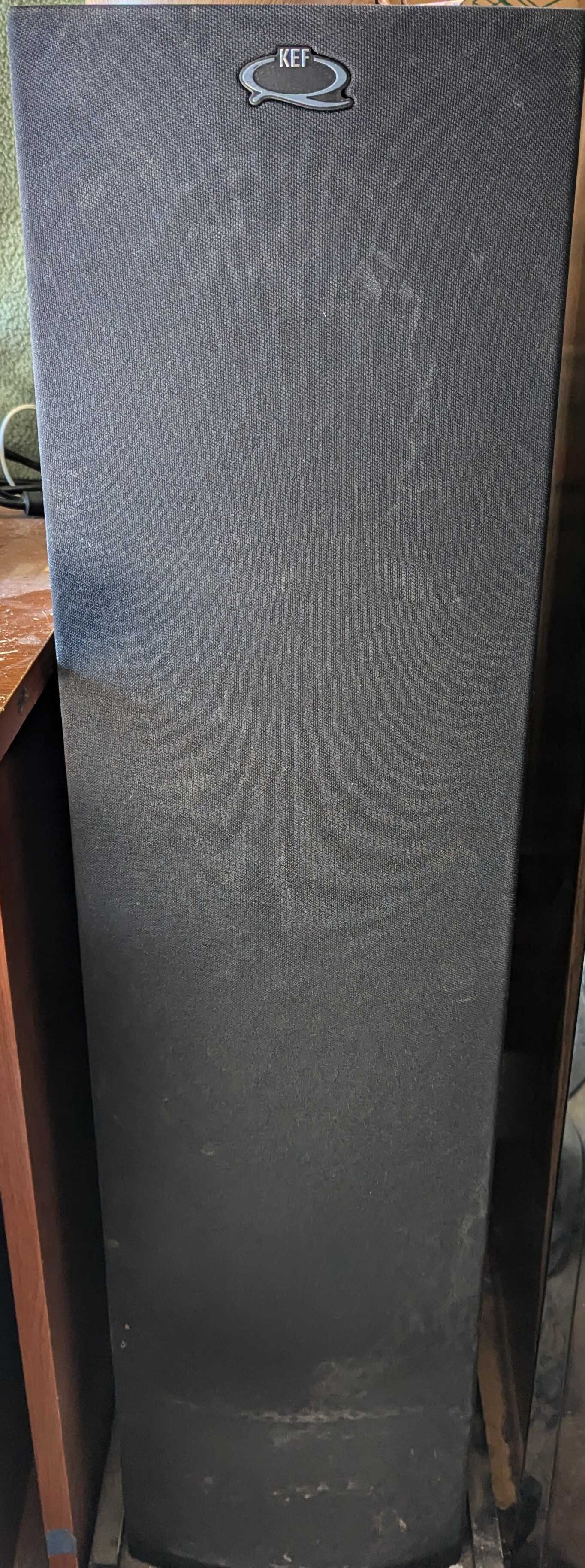
The KEF Q65 speaker.
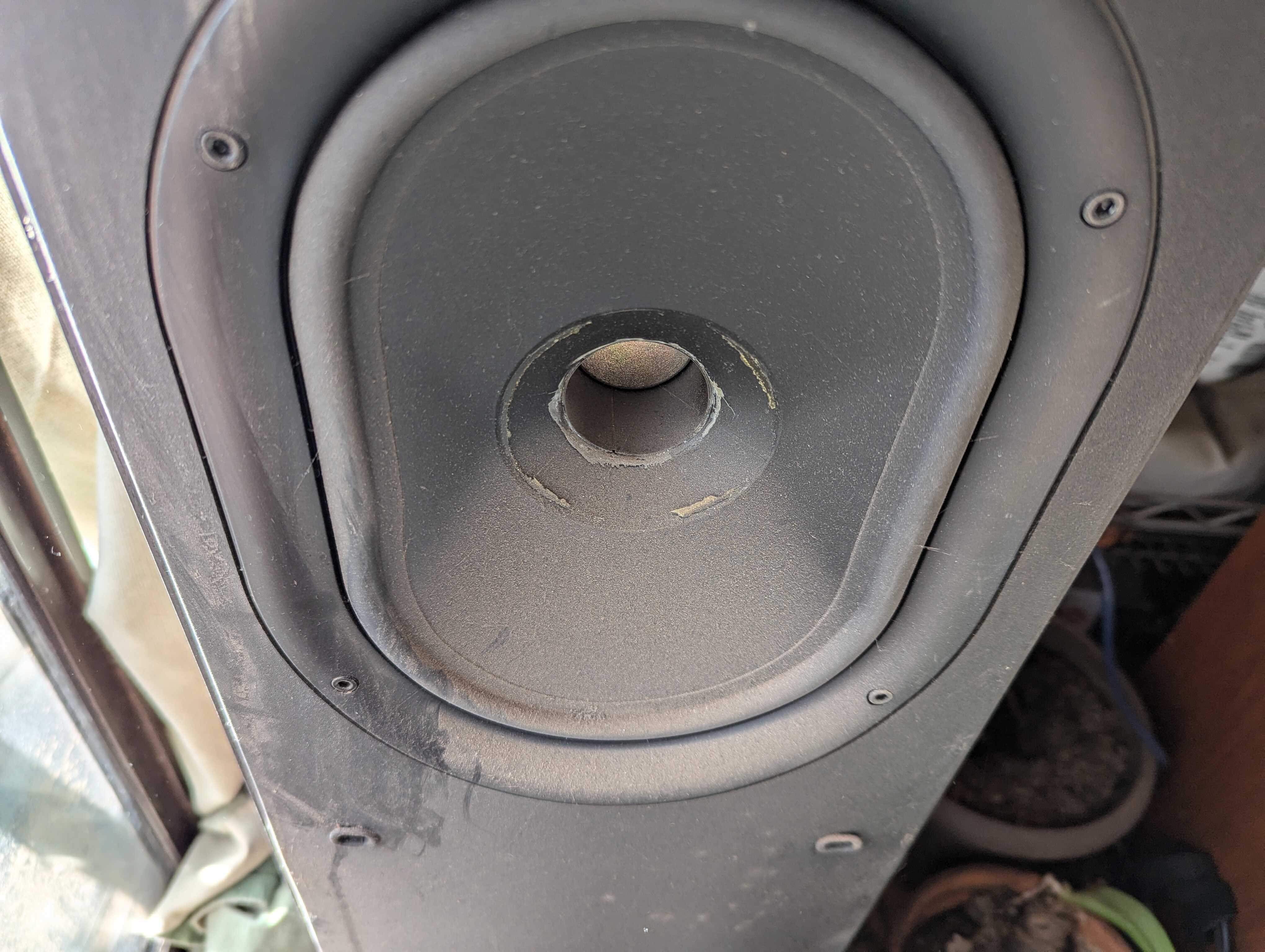
The defective speaker. Still sounds fine to me.

The other speaker, which looks just fine to me.
I’ve been through quite a few different ways of setting up a device to play the music back through them. So far, there are two ways that really worked:
1: a Raspberry Pi or small x86 PC running LibreELEC (OS that runs Kodi).
2: a Android TV box running Kodi.
I ended up going the Android TV route out of curiosity. It really started with LineageOS. I had seen that they had a Dynalink TV box on their official support list. I ended up buying one, since it was only $30. The TV box came with a relatively nice set of stuff in the box. Power adapter (using good ol’ MicroUSB), Bluetooth remote, two AAA batteries, and the TV box itself, powered by some kind of Amlogic chip. I ran the thing through the setup, and for some reason had the idea to connect it to wifi. I think it was because of the difficulty I was having in trying to get the OEM unlock method to show in the developer options menu. Instant yuck. The thing blasted me with ads. I shut it off, and ended up resetting it again. Turns out you have to do a bunch of weird stuff to get the thing’s bootloader unlocked, including a application you have to run on your PC to interface with it, but once that painful process was over, the thing was mine. All mine. I ended up flashing LineageOS with GApps to it (my mistake, I now wish I had not), and set it up with Kodi. This TV box would be offline for most of its life anyways. I had to block the launcher from getting updates, but that was about the most that needed to happen, and it was perfectly usable after that. Well, kind of.
I had bought a adapter that allows for a USB port on the device. The TV box only has one MicroUSB and a HDMI port, but this dongle would allow me to plug in USB devices while passing power through to the TV box. It worked, except the USB stick I bought would simply not work, even though my FLIRC remote receiver thing worked, along with the USB from my DAC. Oh well. So much for “simple”. I ended up digging up the Omninas, (now retired-link to post on that), and setting it up on my local-only network system. One USB-to-Ethernet dongle later, and I had all my music streaming from my network to the TV box, to the DAC, then to the amplifier, the speakers, and then my ears, which connect to my brain. Phew. I could finally sit down and relax with my high-quality FLAC files.
This setup has its problems, like normal.
1: It is a bit slow to load the music from the drive. I sense that even a gigabit connection wouldn’t do it much good since I think it only supports USB 2.
2: I dearly wish I didn’t install it with the GApps. They do cause some issues because they can’t phone home to tattle on my listening habits. Usually in the form of Assistant getting in the way of me when I turn it back on after a restart. I don’t want to deal with resetting the thing right now, but I may in the future.
3: Reindexing the Kodi library takes a while. Sometimes an hour or more. It’s quite painful when I get a new CD, rip it, and want to listen to it right away even thought the TV box is taking its sweet sweet time.
4: If I turn the TV off, the music stops. Super annoying, but putting a visualization on the screen fixes the problem of burn-in.
Other than those problems, the TV box has been exceptionally nice. The remote it came with is decent too, despite its lack of play/pause buttons. I ended up setting my FLIRC to pick up the play/pause buttons on the Naka’s remote to control the TV box.
I also used Button Mapper to remap the Netflix button on the TV box remote to Kodi instead, and then I also tried to remap the YouTube button to play/pause, but it only works every so often. Regardless of that, it works nicely, and the remote is Bluetooth, meaning I can stuff the TV box wherever, and I will still get control of it. I had to stuff the FLIRC in a potted plant since that still needs the infrared from the Naka’s remote to work.
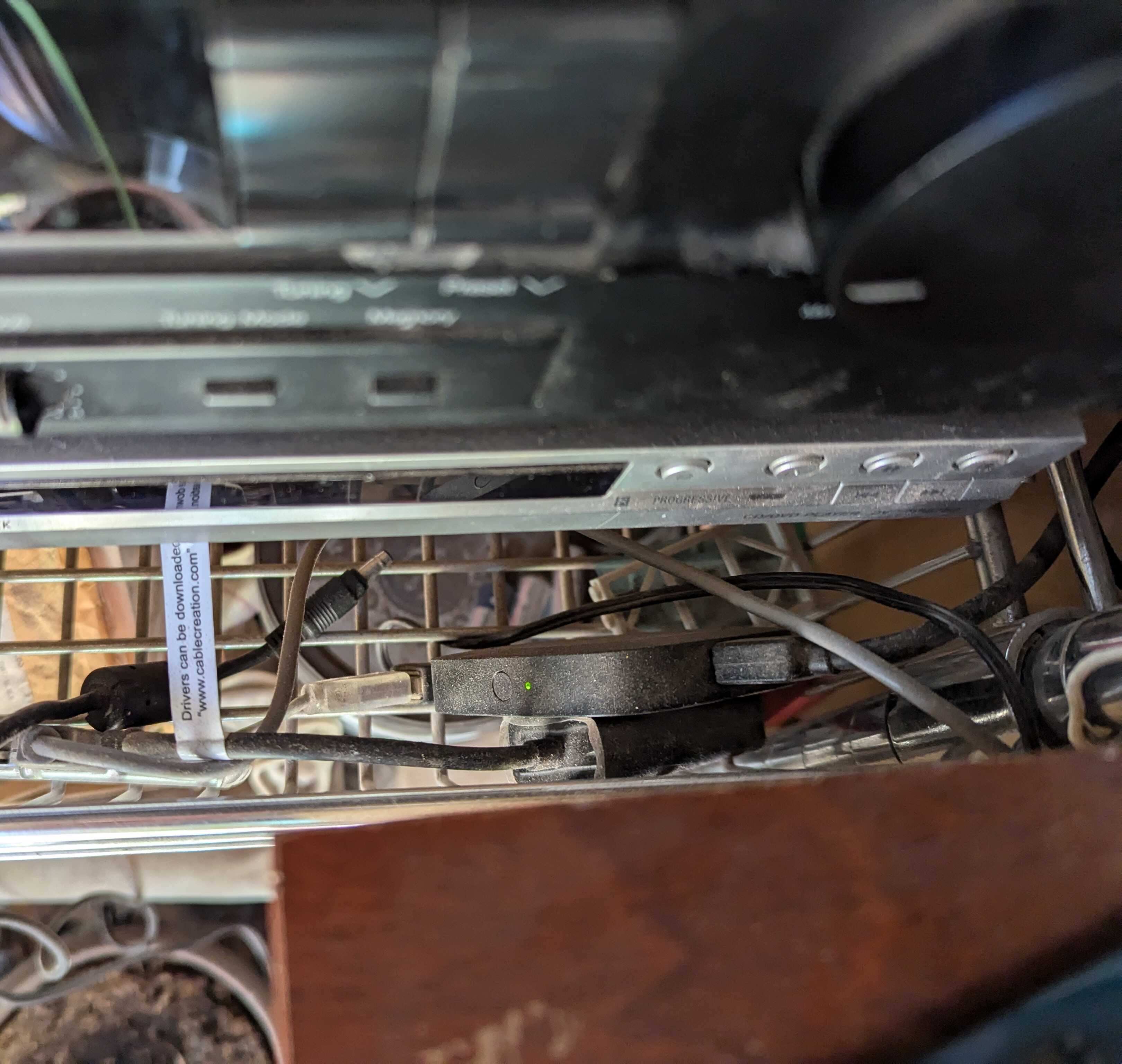
The TV box in its little messy nest.

Potted Christmas Cactus. If you look closely, you might be able to spot the cable leading to the infrared receiver.
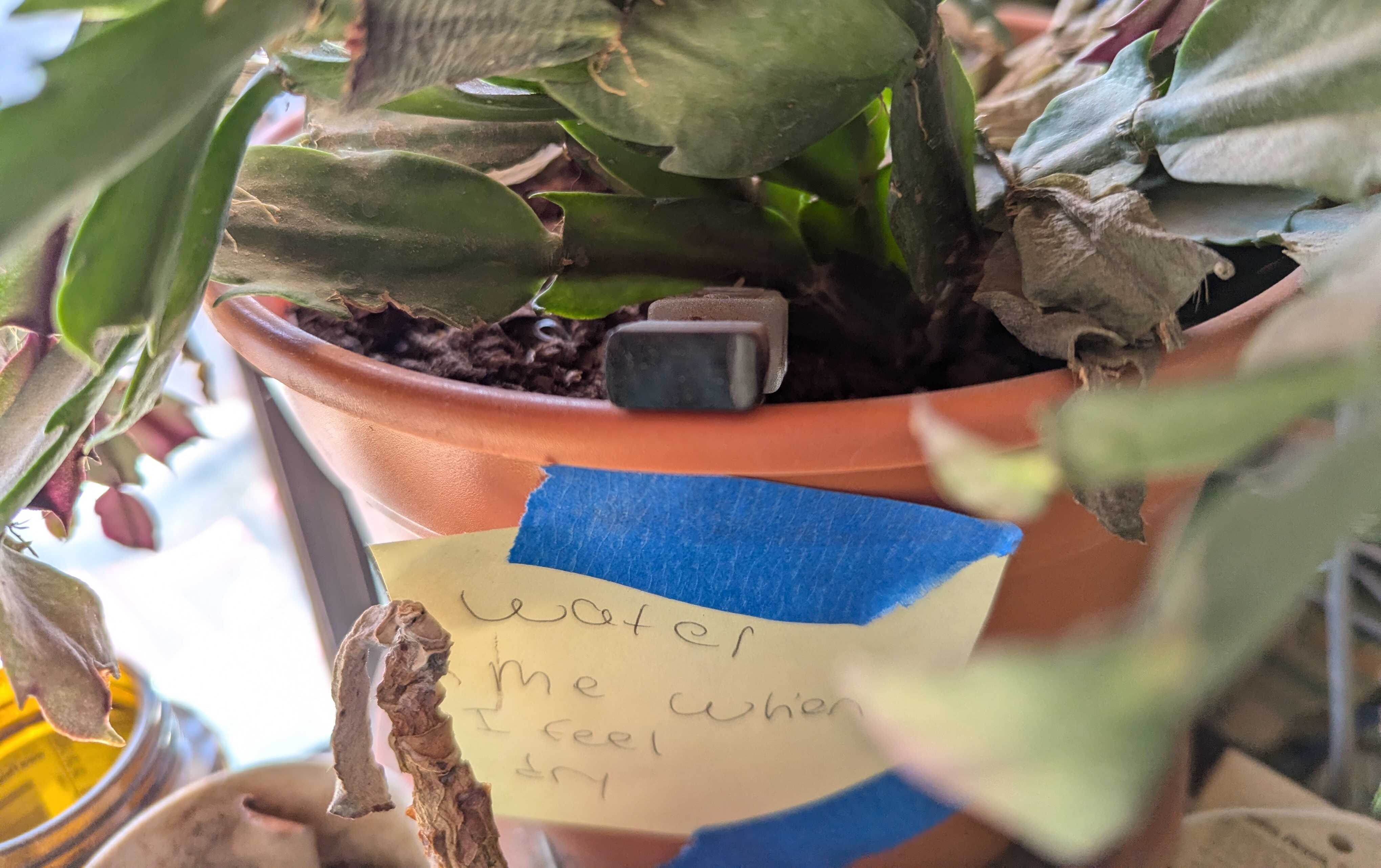
Infrared receiver "hidden" in the plant.
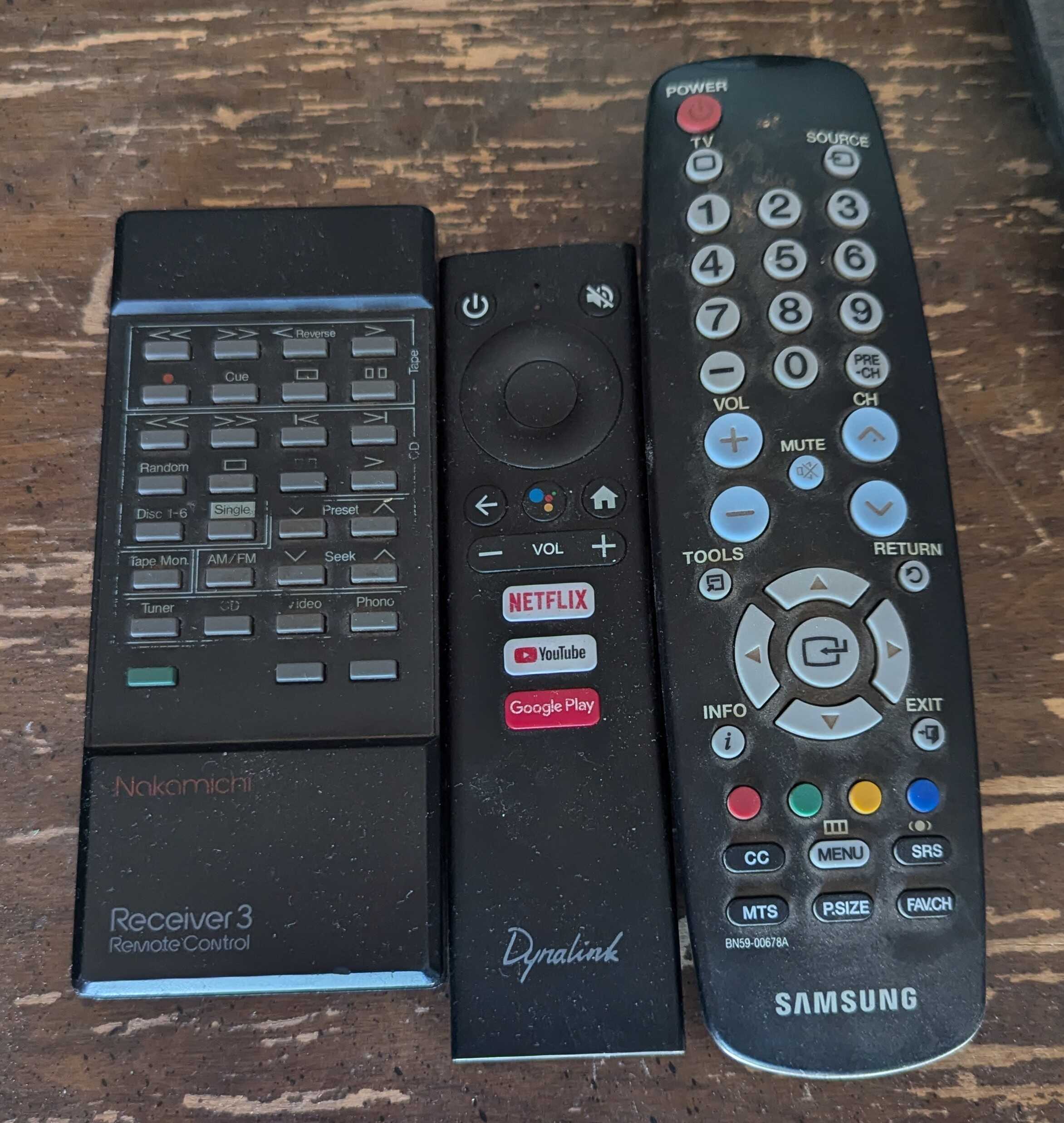
My collection of remotes to control this audio mess. The Nakamichi remote, the TV box remote, and the TV's own remote.
I have had the temptation to replace the TV box with something better, but I don’t think I’m going to bother right now.
Here's the list of the hardware in this setup:
Nakamichi Reciever 3
SMSL Sanskrit 6th DAC.
Dynalink TV Box running LineageOS.
KEF Q65 speakers.
Samsung SyncMaster 2333HD TV
Essentially, the TL;DR of this is that I made a over-complicated Kodi setup for listening to music.
Here’s a drawn-out confusing diagram of the setup:

Confusing diagram of my audio setup.
The CPU Benchmark Project.
I’ve mentioned before in this blog that I have been running Cinebench on all different varieties of PCs, ranging from Celerons that are essentially vegetables all the way up to 15-year old i7s that just so happen to get the highest score so far. It’s been quite interesting to see the benchmarks play out. Usually, on 64-bit devices that I decide to torture, I usually run R23, R20, R15, and, for a cheap laugh, 2003. I have noticed that, if I’m not mistaken, R20 can sometimes place one device slightly below a device that ranked higher in R23 and R15. It’s happened a couple times, and for the sake of science I did re-run the benchmark several times after letting the device cool off for a reasonable time period, with near-consistent results. It’s quite interesting to see how these benchmarks play out on different hardware. 2003 is the one that I quite often get the most variances in, due to it being for older CPUs that don’t have all the fancy “nonsense” newer CPUs have. It also has the widest compatibility range, meaning it runs on just about every Intel and AMD CPU I’ve got.
Here are the scores for the devices I have ran the benchmark on so far. 2003 has the most, with some of them not done in the most scientific way, hence my idea of redoing quite a few of them in the future:
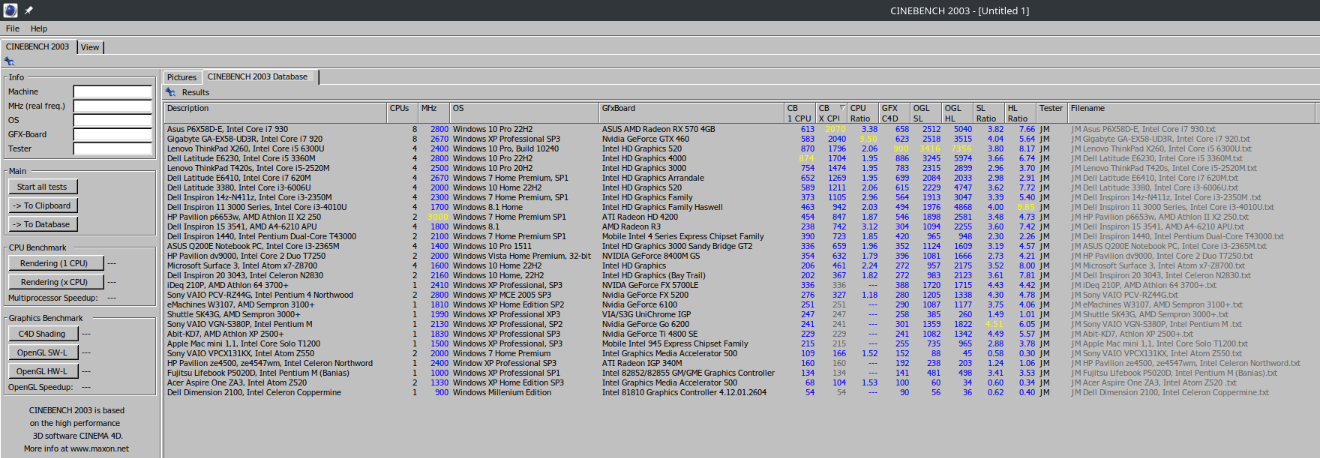
Cinebench 2003 results.
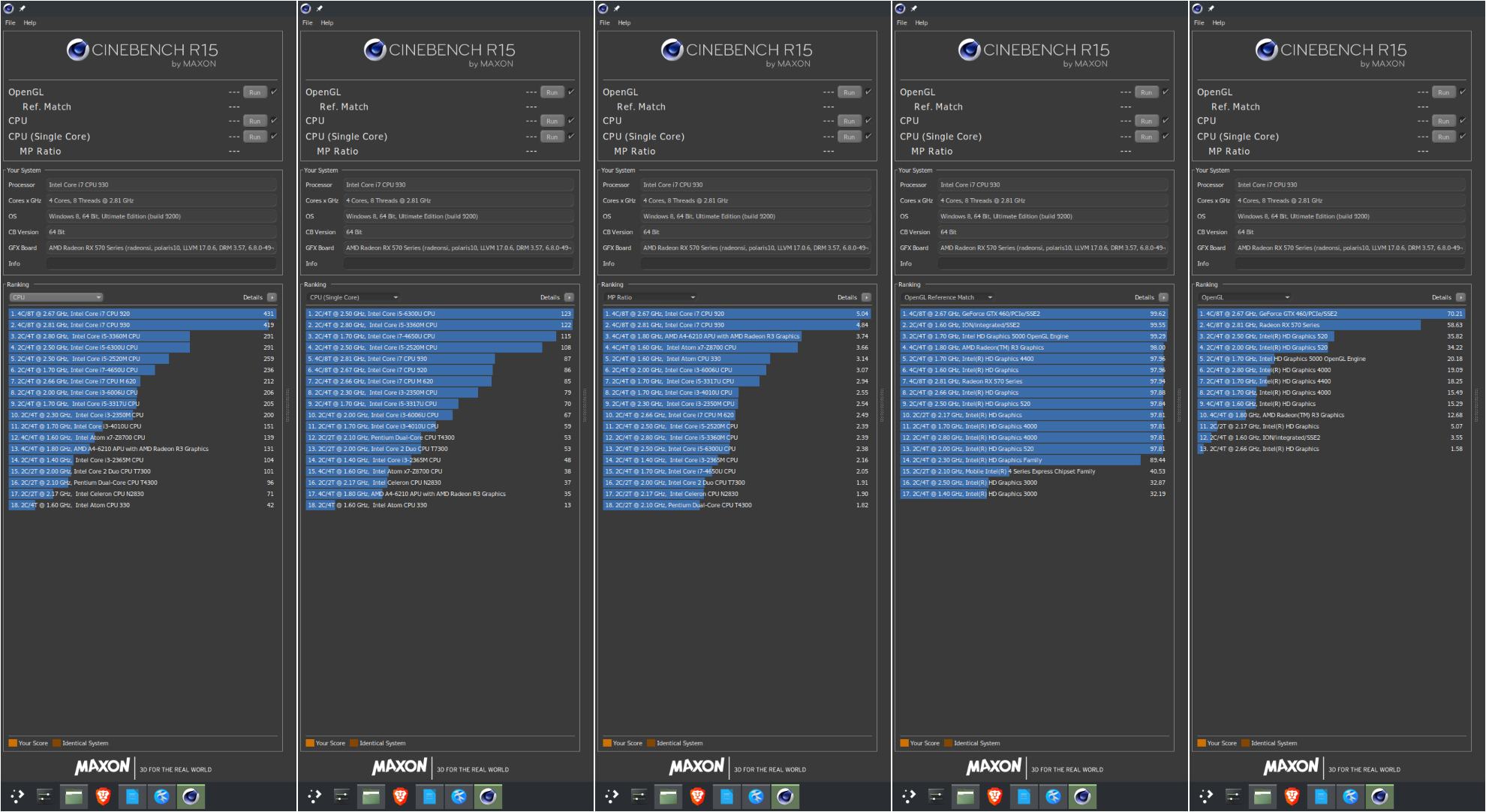
Cinebench R15 results.
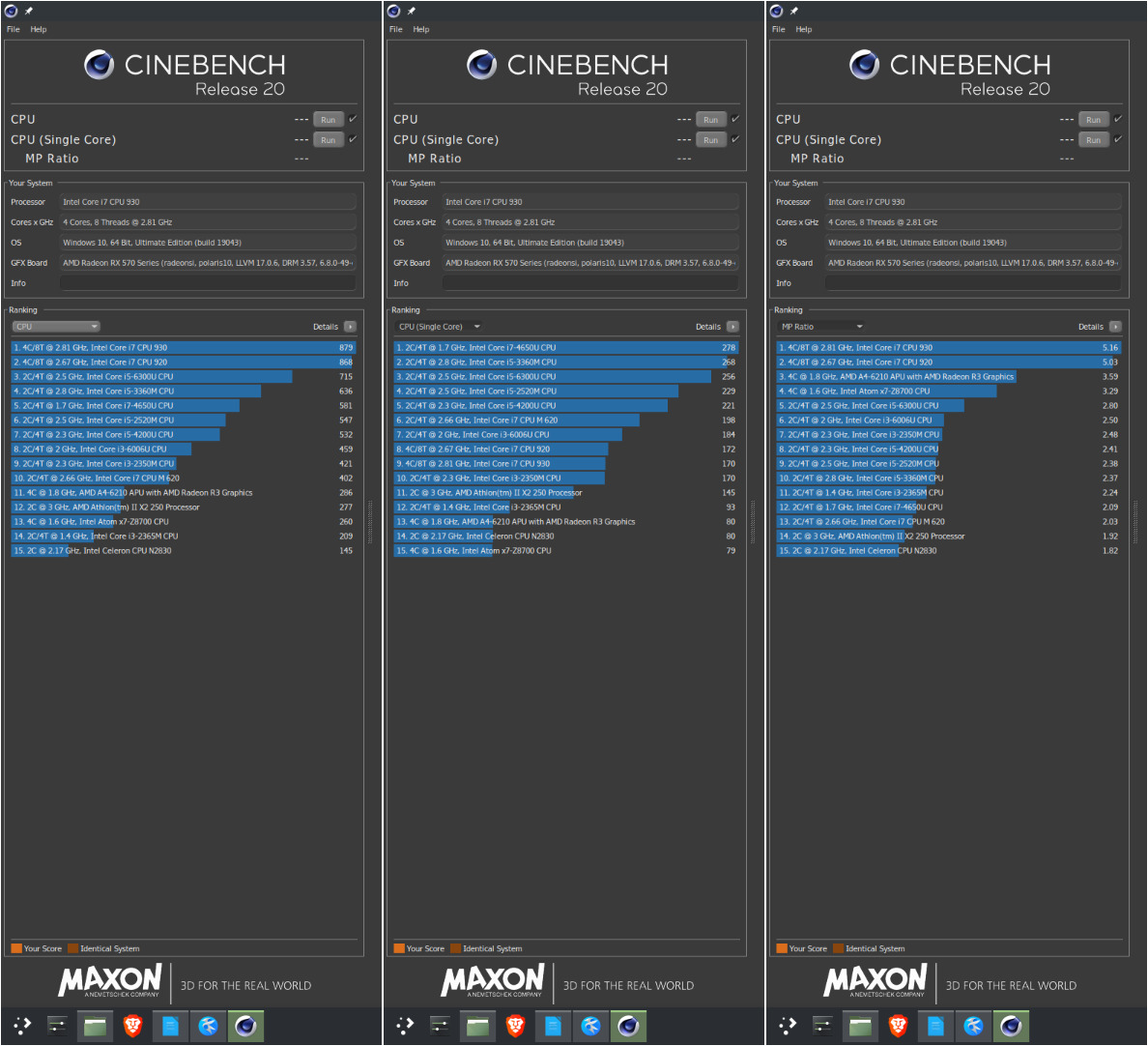
Cinebench R20 results
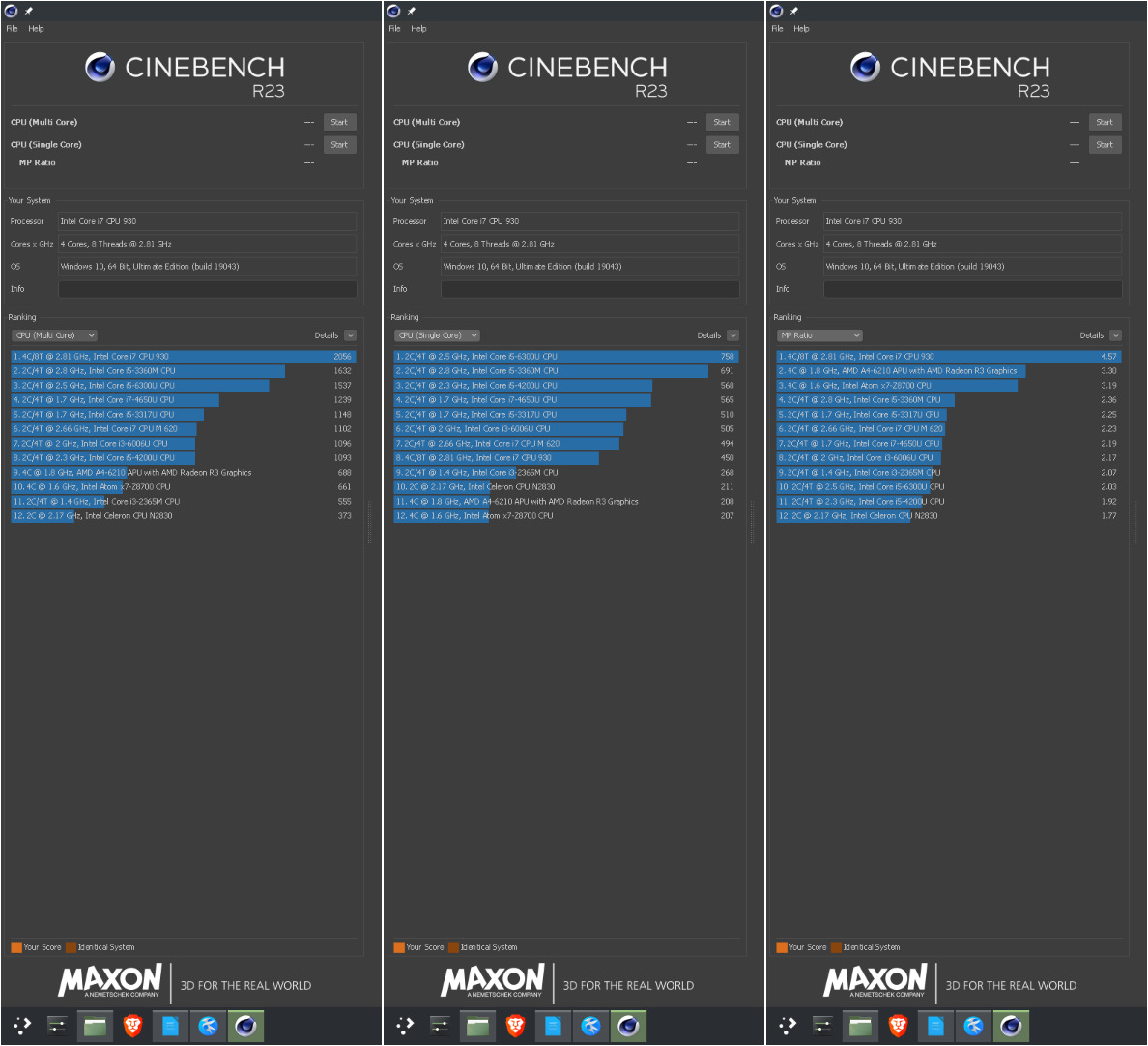
Cinebench R23 results.
Curb TV.
I ended up with this Sharp Aquos LC-60LE650U TV from someone’s curb. Supposedly it was having issues. And yes, yes it does. As it turn out the issue seems to happen when the TV gets pressure in the wrong spot, which, as far as I’m concerned, is where you would mount the TV to a wall. It turns a weird shade of black on one half of the TV with a bit of the signal getting through. I found out that if you balance it just right sitting on a table, it works just fine, albeit in a “high definition” 1080p resolution on a 60 inch screen. I did not replace my tiny 24 inch Samsung TV with this since I don’t watch movies on my TV and I don’t want a screen this big, especially because I don’t really have a lot of space to comfortably start at it. I’m going to try and fix it, it’s just a matter of a good day coming by to fix it. I need to take some better photos of it without reflections, hence why I don’t have any posted here today.